Published by: Nuru
Published date: 22 Jun 2021

Digital computers perform a variety of information-processing tasks. Among the basic functions encountered are the various arithmetic operations. The most basic arithmetic operation, no doubt, is the addition of two binary digits. It is done by adders.
Adders are basically of two types;
Input: 2 (let x and y)
Output: 2 (let C for Carry and S for Sum)
Truth table:
| X | Y | C | S |
|---|---|---|---|
| 0 | 0 | 0 | 0 |
| 0 | 1 | 0 | 1 |
| 1 | 0 | 0 | 1 |
| 1 | 1 | 1 | 0 |
The simplified Boolean functions for the two outputs can be obtained directly from the truth table. The simplified sum of products
expressions are:
S = x'y + xy'
C = xy
Implementation:
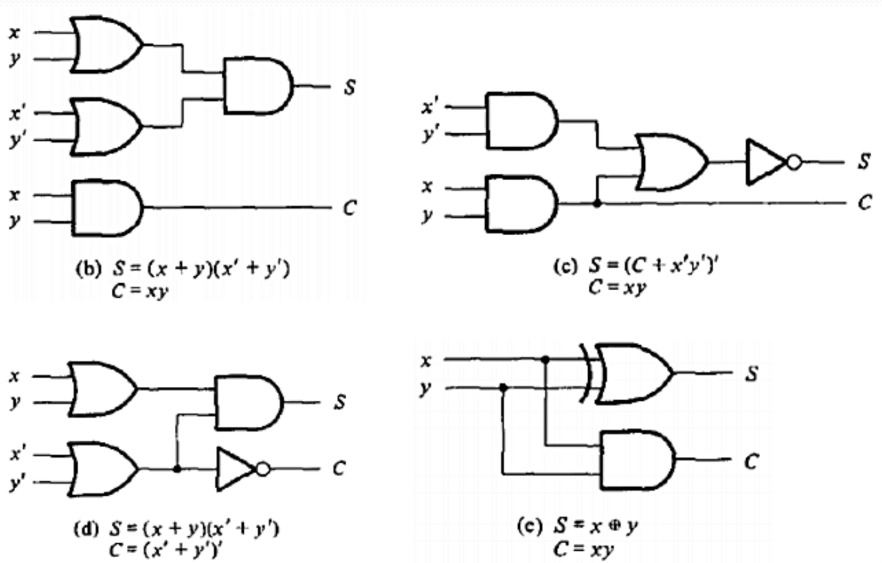
Other realizations and implementations of Half-adders are:
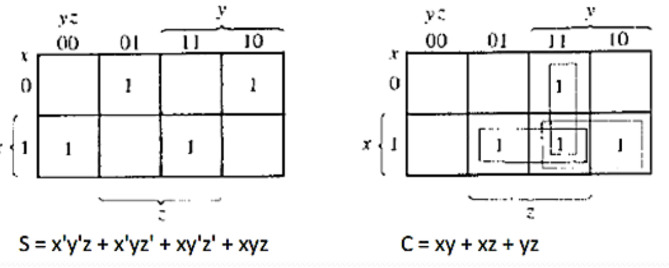
Input: 3(Let x, y, z )
Output: 2(Let C for carry and S for sum)
Truth Table:
| X | Y | Z | C | S |
|---|---|---|---|---|
| 0 | 0 | 0 | 0 | 0 |
| 0 | 0 | 1 | 0 | 1 |
| 0 | 1 | 0 | 0 | 1 |
| 0 | 1 | 1 | 1 | 0 |
| 0 | 1 | 0 | 0 | 1 |
| 1 | 0 | 0 | 0 | 1 |
| 1 | 0 | 1 | 1 | 0 |
| 1 | 1 | 0 | 1 | 0 |
Boolean functions with simplification by K-map:
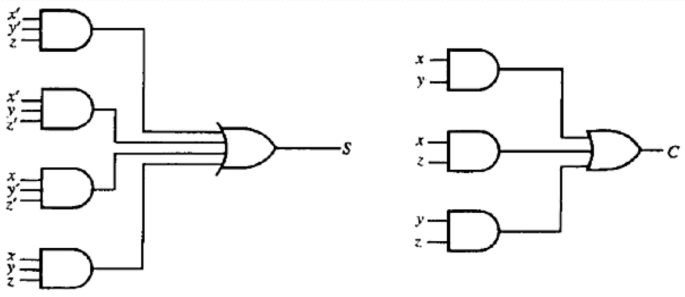
Implementation:
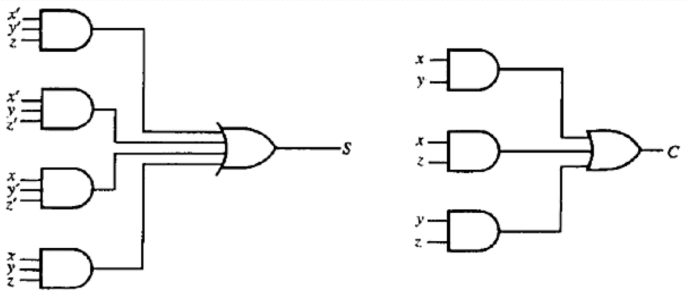
Fig: Implementation of a full-adder in terms of the sum of products.
A full-adder can be implemented with two half-adders and one OR gate.

Fig: Implementation of a full-adder with 2 half-adders and an OR gate
Here, The S output from the second half-adder is the exclusive-OR of z
and the output of the first half-adder, giving:
S = z ⊕ (x ⊕ y) C = z (x ⊕ y) + xy
= z'(xy' + x'y) + z(xy' + x'y)' = z(xy' + x'y) + xy
= z'(xy' + x'y) + z(xy + x'y') = xy'z + x'yz + xy
= xy'z' + x'yz' + xyz + x'y'z
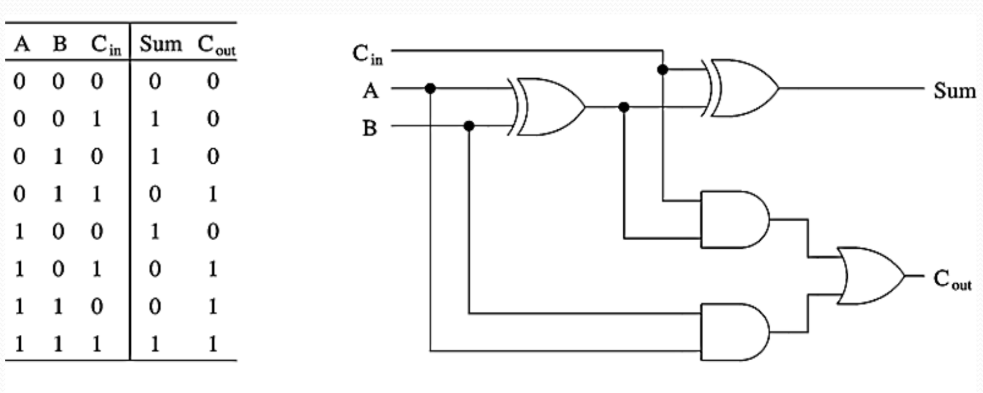
Fig: Full adder truth table and implementation